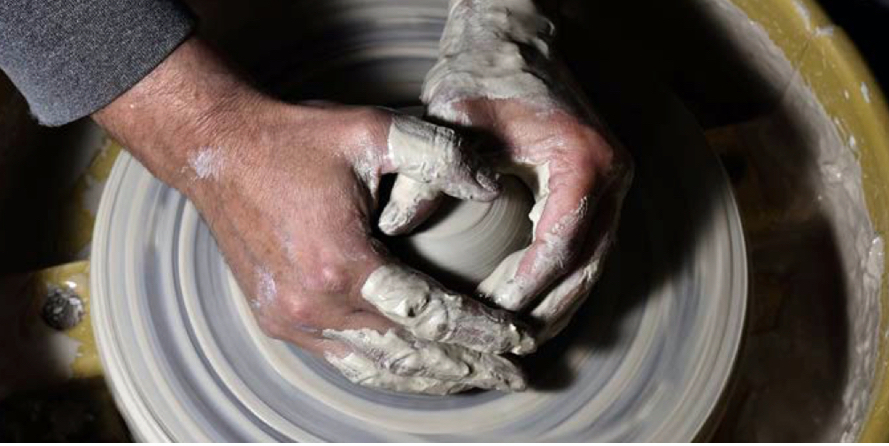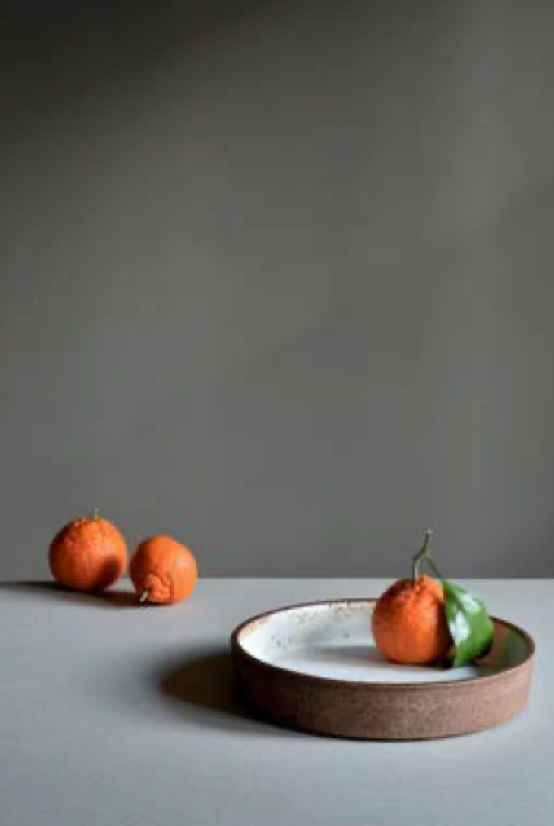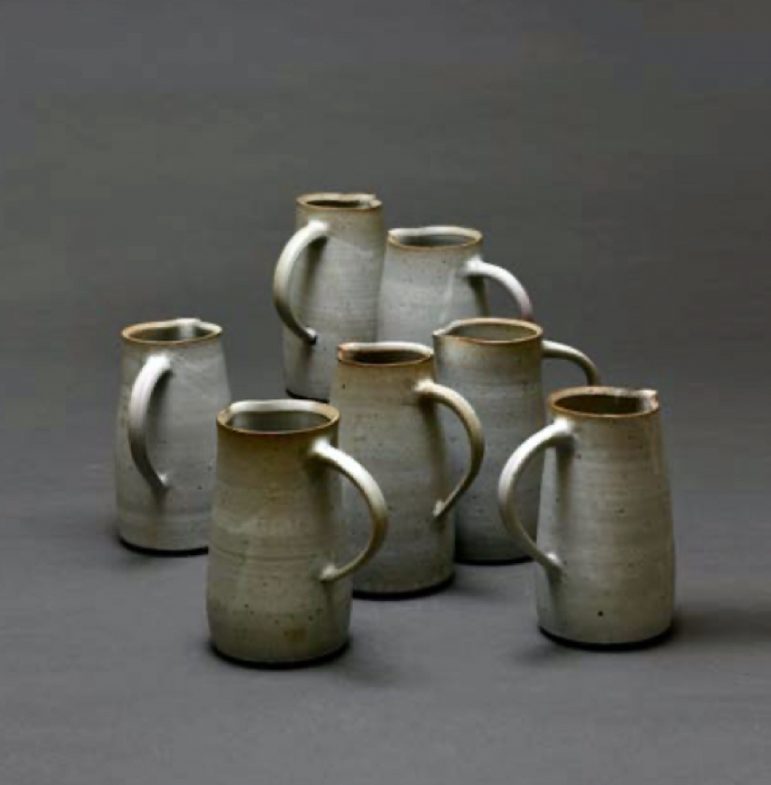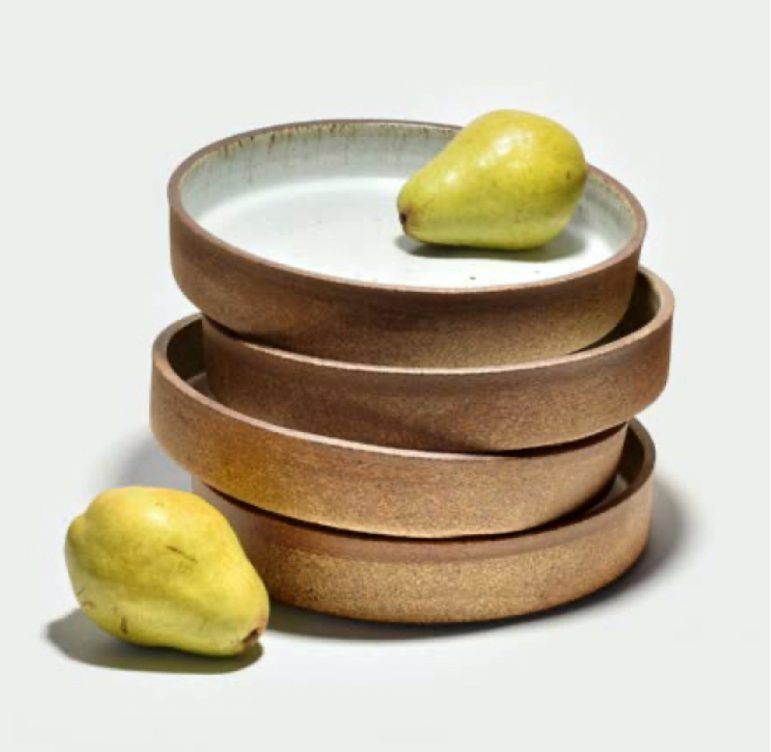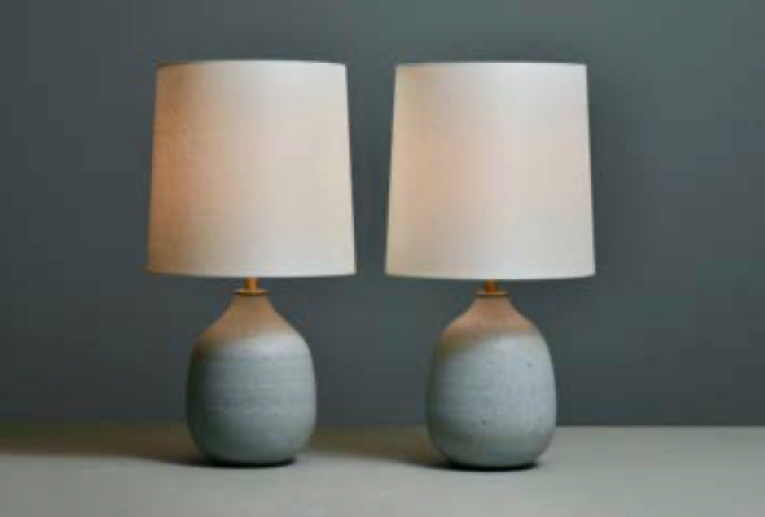In the hands of potter Bob Dinetz, a shapeless lump of clay becomes a birdhouse — utterly simple, perfect for its intended use with no more and no less design than necessary. An object that will be as useful for its inhabitant as it is beautiful for its owner to look at for many years to come. And that is the principle that Dinetz has applied to all his pottery work since he took up the craft in 2013.
Dinetz, a well known graphic designer and branding expert for firms such as Apple, Impossible Foods and Piedmont’s own Mulberry’s Market, has a ceramics studio at his Piedmont home. On the wheel in his studio, Dinetz throws a wide variety of pieces such as bowls, vases, pitchers, lamp bases and, of course, bird houses.
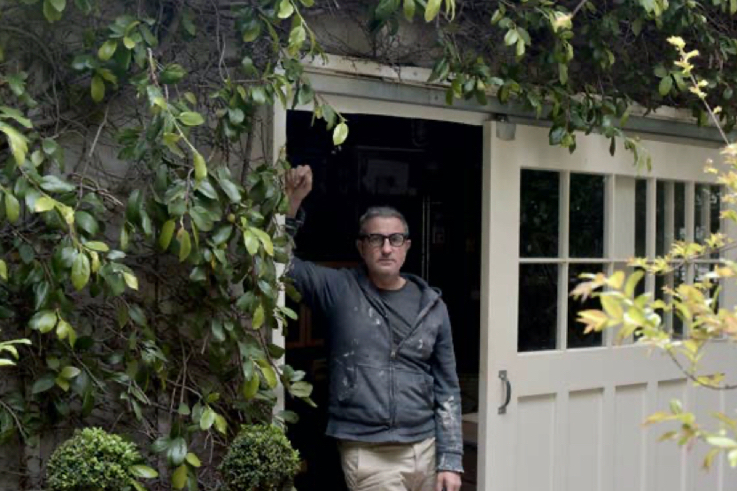
Bob Dinetz outside his home and studio 
Since the pandemic began last year, Dinetz has used some of his time to experiment with new shapes such as slab-built pieces composed of rectilinear forms rather than cylindrical. Firing is done in the kiln at the Berkeley Potters Studio, a place where Dinetz has found a knowledgeable and generous community of potters.
Experimentation and exploration are inherent in Dinetz’ creative process. Originally finding inspiration in vintage Bauer pottery he collected with his wife, Dinetz discovered the rustic, everyday pottery pieces used in Japanese households while there on a family vacation. Attracted to the unfussy, confident style of these pieces, Dinetz decided to learn the craft himself. Over time Dinetz has expanded his repertoire of shapes, finding that new shapes come from the process of making; sometimes months after making a piece he will realize there is a better way. He keeps his shapes simple and enjoys using the nearly infinite possibilities of the glazing process to add visual interest.
Over the years, Dinetz has been inspired by the work of mid-century European potters such as Lucie Rie, Berndt Friberg, and Stig Lindberg, as well as the American potter from Fresno, Stan Bitters.
Like the potters who have inspired him, Dinetz’ work has found popular and commercial success. However, for Dinetz, the pottery process is not goal oriented. He describes it as an iterative process that he enjoys exploring, and that like anything worthwhile, happens over time.
Dinetz credits his mother’s artistic talent as an early influence, and recalls his grandfather’s beautiful cursive handwriting. A fascination with logos and typeface had its beginnings in his grandfather’s print shop on 23rd Street in New York where Dinetz examined the metal type used to print custom stationery.
As a teenager growing up in Los Angeles, Dinetz did a lot of drawing and recalls copying album covers by drawing the band name in pencil. In high school Dinetz took what was then called a “commercial art” class and remembers creating a poster about fire safety with a giant match on it. Dinetz went on to complete a graphic design degree at Cal Poly in San Luis Obispo.
It is this ability to discover the essential truth of a product or an object that has been the source of his success in both his graphic design business and as a potter.
He gets excited about the concept of using only as much design as necessary to communicate an idea. And if the pottery process can be used as a metaphor for life, for Dinetz, it is that humble materials, mostly mud, can be transformed from a shapeless clump into something entirely different
To learn more, visit www.bobdinetz.com and/or email Dinetz bob@bobdinetz.com.
Dinetz’s work can be found in the following local (and beyond) retail shops:
- Black and Gold | San Francisco
- Vintage Rug Shop | Oakland
- Morningtide Shop | Berkeley
- Salty | Sausalito
- Poet & The Bench | Mill Valley
- Housework Store | Petaluma (online)
- Shoppe Amber Interiors | Los Angeles
- Bloomist | New York (online)
All photographs courtesy of Bob Dinetz
